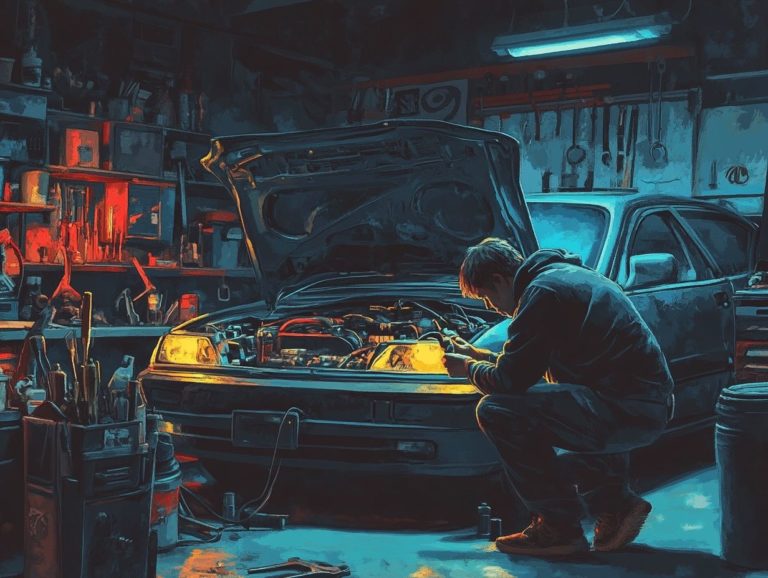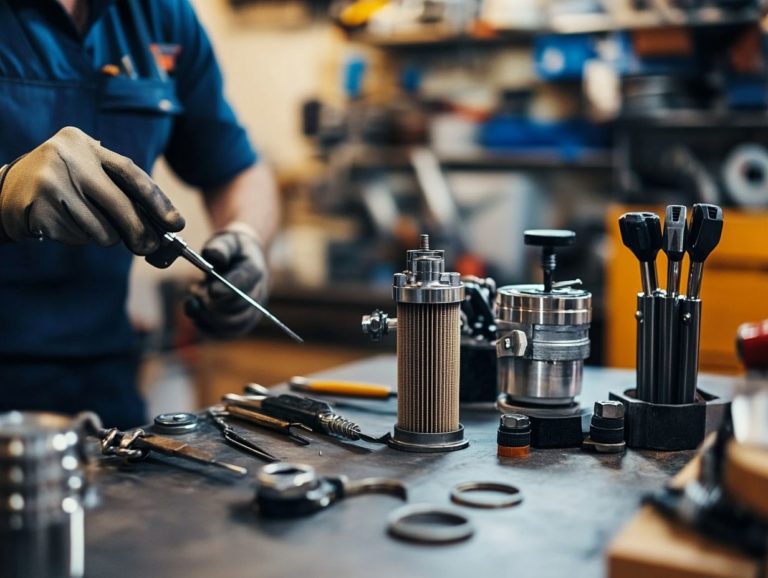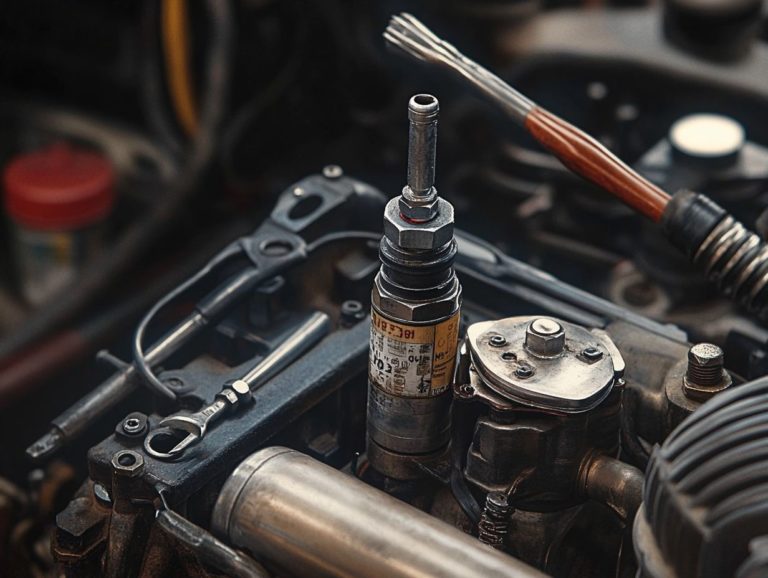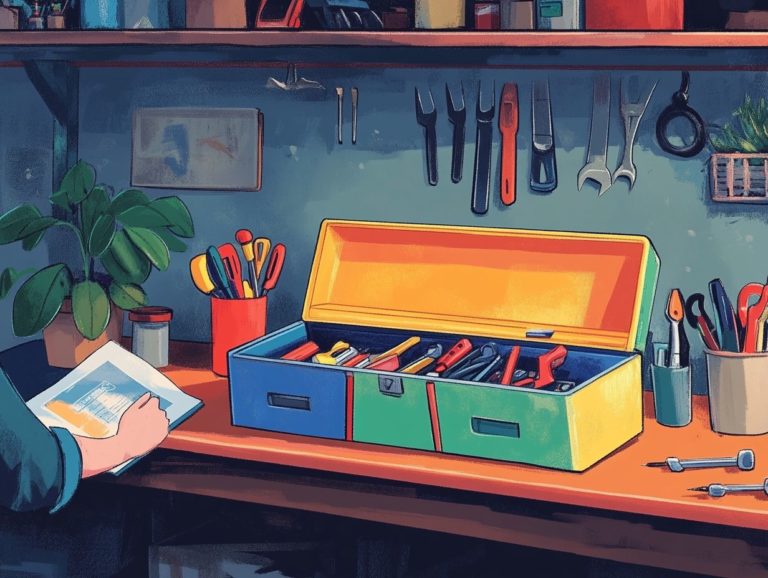Common Headlight Issues and How to Fix Them
Headlights are crucial for safe driving, yet they frequently face issues that can diminish your visibility on the road.
From dim lights that barely cast a glow ahead to flickering beams that might distract other drivers, it’s essential for you as a vehicle owner to recognize these common problems.
This article delves into typical headlight issues, including alignment troubles and the need for bulb replacements, while offering practical solutions and maintenance tips to keep your headlights shining brilliantly. Keep reading to discover how you can make your driving safer and more enjoyable!
Contents
Key Takeaways:
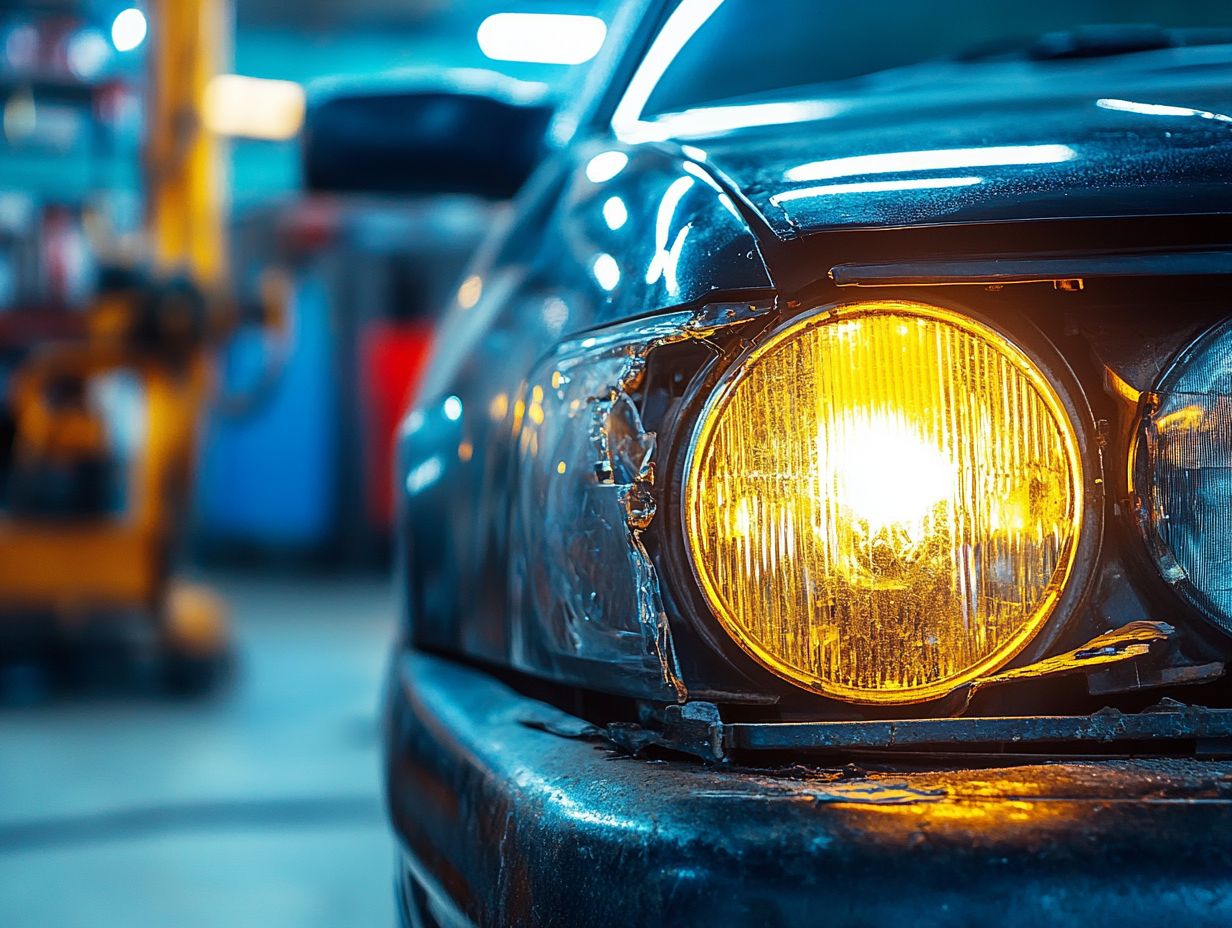
Common Causes of Headlight Problems
Grasping the common causes of headlight issues is vital for maintaining optimal visibility and ensuring your driving safety.
You might encounter problems such as dim headlights stemming from electrical faults, wiring complications, or burned-out bulbs. These headlight failures can seriously affect your driving experience, potentially leading to vehicle breakdowns if not addressed swiftly.
Regular visual inspections of your headlight assembly and its components are essential to spot signs of foggy lenses or other deterioration. This proactive approach allows for timely repairs and upgrades to modern automotive technologies like LED (Light Emitting Diode) or HID (High-Intensity Discharge) headlights, enhancing both performance and safety.
Dim Headlights
Dim headlights pose a serious hazard for you as a driver, significantly diminishing visibility at night and during challenging weather conditions.
This issue often arises from faulty electrical connections, deterioration in the headlight housing, or aging bulb types. A meticulous troubleshooting process is essential to uncover the root cause.
Regular maintenance is vital for ensuring your headlights perform at their best. Neglecting dim headlights can create perilous driving situations that you definitely want to avoid.
Possible Causes and Solutions
Several potential causes can lead to dim headlights, each requiring specific solutions to ensure optimal performance and safety on the road.
Common culprits include burned-out bulbs, electrical issues, and malfunctioning components within the headlight assembly. To identify the exact cause, a thorough troubleshooting process is often necessary, involving visual inspections and testing of electrical connections.
One frequent reason for dim headlights is a burned-out bulb, which diminishes light output and can be easily remedied by simply replacing the bulb with a new one. Corroded electrical connections can restrict power flow to the headlights; cleaning or repairing these connections can restore their optimal performance.
Another concern may stem from misaligned headlight beams, which not only reduces illumination but can also create a safety hazard. Properly adjusting the headlight assembly can help mitigate this risk. It’s crucial to tackle these repairs with the right tools and techniques to ensure both effectiveness and safety.
Regular maintenance checks can prevent these issues from arising and keep your headlights functioning efficiently.
Flickering Headlights
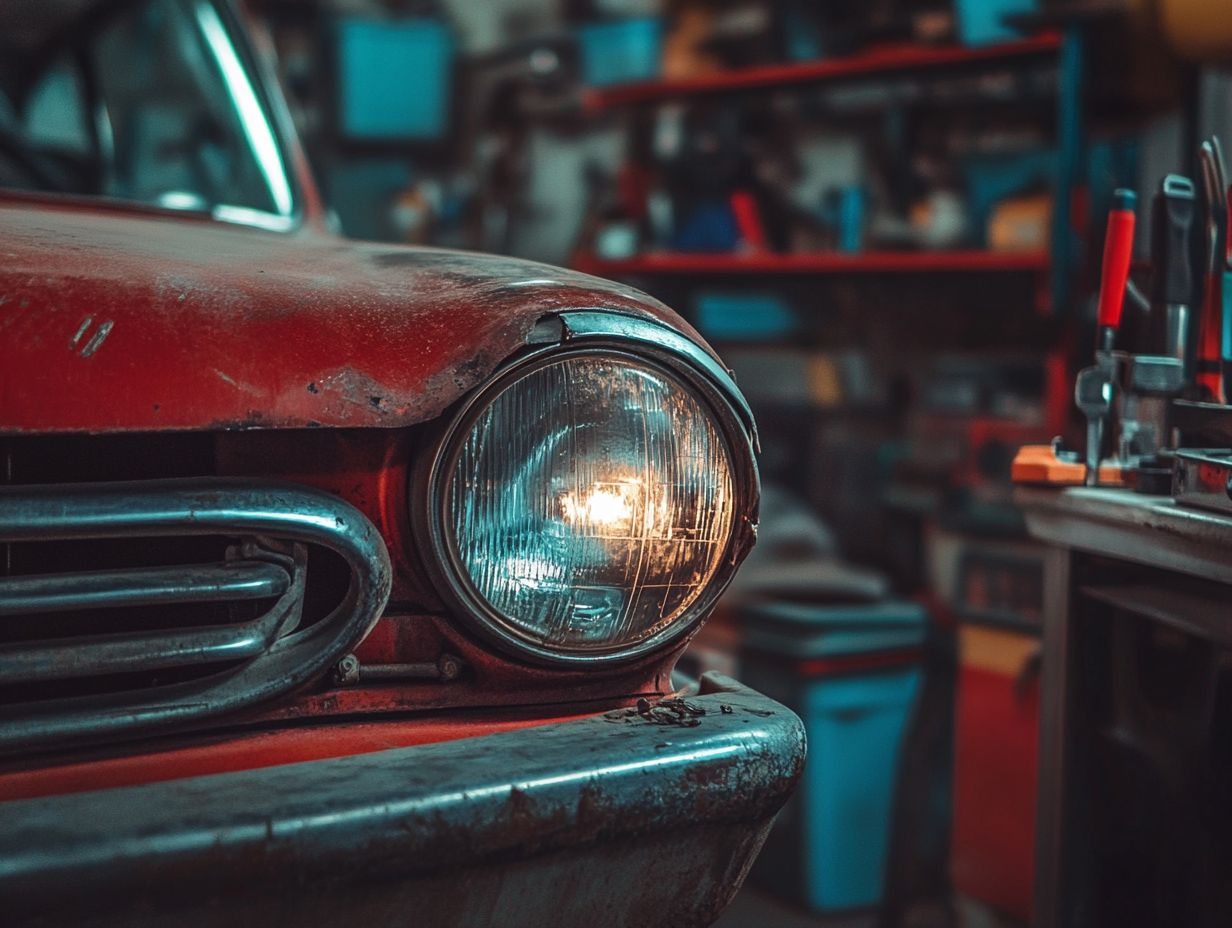
Flickering headlights can be quite the problem, often signaling underlying electrical issues that demand your immediate attention.
This phenomenon may stem from a faulty relay, a blown fuse, or loose electrical connections that disrupt the power supply to your headlights. Start by checking for obvious issues like loose connections.
To tackle the flickering, you ll want to engage in a systematic troubleshooting process to pinpoint the root cause. Enlisting the expertise of a qualified mechanic can ensure a comprehensive diagnosis and effective resolution, bringing clarity back to your driving experience.
Troubleshooting and Repair Options
Troubleshooting and repairing flickering headlights requires a methodical approach to pinpoint the underlying issues impacting your vehicle’s electrical system. Common diagnostic tests can uncover problems like failing fuses, faulty relays, or loose wiring connections that may disrupt the power supply to your headlights. Implementing effective repair options not only resolves the flickering but also enhances your vehicle’s safety features.
Start by consulting your vehicle’s manual to locate specific fuse positions and ratings. With a multimeter a tool used to measure electrical voltage in hand, measure the voltage across the headlight terminals to ensure they are receiving a steady current.
If you find the voltage inconsistent, inspect the fuses for any signs of damage or wear. Replacing a blown fuse is straightforward and can be accomplished in just a few minutes.
Next, check the relays. Swapping them with similar relays in the fuse box can help identify any malfunctioning units.
Don t overlook the importance of examining and tightening connections. This simple step can prevent power interruptions. Prioritizing quality components during replacements ensures long-term reliability and minimizes the likelihood of future issues.
Headlight Alignment Issues
Improper headlight alignment can pose significant visibility challenges, impacting your driving performance and the essential safety standards for automotive operation.
When your headlights are misaligned, they can scatter light inappropriately, creating glare for fellow drivers and diminishing your ability to see the road clearly.
Regular adjustments are crucial to maintaining optimal headlight alignment and ensuring a safer driving experience. Prioritizing this task can make all the difference on the road.
Steps for Proper Alignment
Achieving proper headlight alignment involves a carefully curated series of steps that guarantee precise placement and optimal performance. Start with a meticulous visual inspection of the headlight housing and your vehicle’s alignment. Then, employ tools you need to make any necessary adjustments. Follow a systematic approach to check both low beam and high beam settings, ensuring they are positioned for maximum visibility on the road.
This process elevates safety and enhances your overall driving experience. Tools like a measuring tape and a level are essential for making those precise adjustments. Be sure to park your vehicle on a level surface and aim the headlights against a wall or garage door, marking the ideal beam height.
Check both low and high beams. Improper alignment can lead to inadequate illumination and potentially blind other drivers. Regular checks and alignments can significantly reduce the risk of accidents and improve nighttime visibility, ensuring that each journey is safer and more comfortable.
Replacing Headlight Bulbs
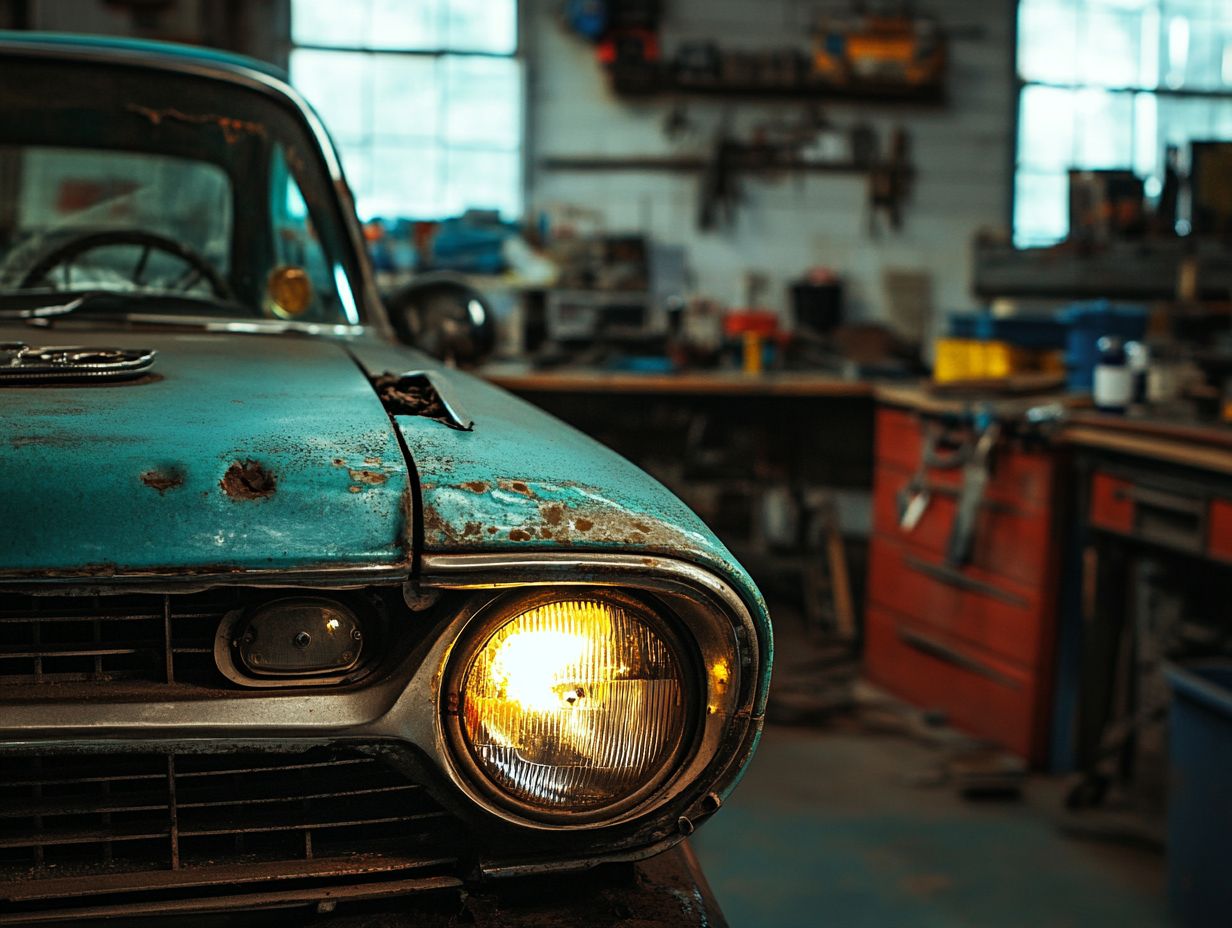
Replacing headlight bulbs is an essential part of vehicle maintenance that can greatly improve your safety and visibility on the road.
With a range of bulb types available such as traditional halogen, LED, and HID options (High-Intensity Discharge lights, known for their brightness) it’s crucial to know how to select and replace these components effectively.
A well-crafted DIY guide can assist you in navigating the replacement process, ensuring that you choose the right automotive technologies tailored to your vehicle’s specific requirements.
Are your headlights aligned properly? Here s how to check! Regularly inspect your headlights for safety.
DIY Guide and Tips
A DIY guide to replacing headlight bulbs empowers you as a vehicle owner. It improves your car skills, saves on costs, and boosts safety.
This guide will provide essential tips and steps for successfully replacing headlight bulbs, ensuring your vehicle maintains optimal visibility for a safer driving experience.
By following a straightforward process, you can tackle this task with confidence. You will need just a few basic tools: a pair of gloves, a screwdriver, and the correct bulb type for your vehicle model.
Before diving into the replacement, it’s crucial to prioritize safety. Always turn off the engine and disconnect the battery to avoid any electrical mishaps.
Choosing the right bulb whether halogen, LED (energy-efficient lights that last longer), or HID (high-intensity discharge) will significantly enhance your nighttime visibility, allowing for clearer driving conditions.
Embracing these DIY practices fosters better vehicle maintenance and contributes to overall performance, ensuring a dependable and safe ride for everyone on the road.
Preventing Headlight Issues
Preventing headlight issues is vital for your safety and performance on the road. It all begins with consistent maintenance and care.
Regular visual inspections of your headlight assembly, combined with the latest automotive technologies, allow you to spot potential problems before they become serious.
By adhering to practical care tips, you can significantly enhance the longevity and functionality of your headlights. This ensures a safer and more enjoyable driving experience.
Maintenance and Care Tips
Proper maintenance and care tips can significantly extend the life of your headlights and enhance their performance on the road.
Regular visual inspections allow you to catch issues like foggy lenses or deterioration in the headlight housing. Embracing modern automotive technologies can further boost visibility and safety features.
Visual Inspections
To make the most of your visual inspections, check for any cloudiness or discoloration on the lens surface. Clean them regularly to maintain clarity.
Cleaning Techniques
Using specialized headlight cleaners or a simple mixture of vinegar and baking soda offers a natural approach. Remember to wipe them down with a soft cloth to avoid scratches.
Consider using LED bulbs for better light output while consuming less energy and often lasting longer than traditional halogen bulbs.
Keeping your headlights in optimal condition improves visibility during night driving and plays a critical role in overall vehicle safety. Taking action now will keep you safe on the road!
Check your headlights today to ensure they’re shining their brightest!
Frequently Asked Questions
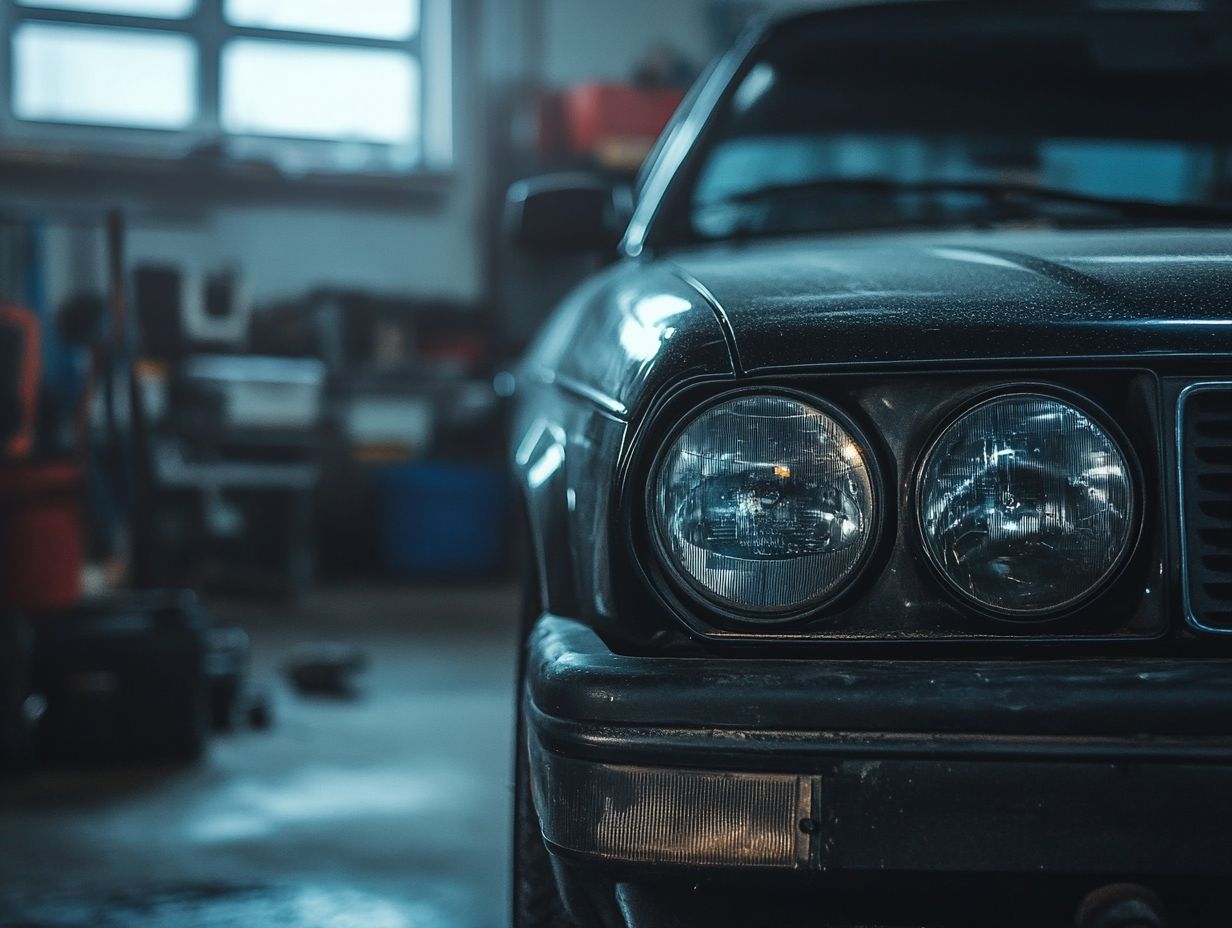
What are the most common headlight issues?
The most common headlight issues include burnt-out bulbs, dirty lenses, and faulty wiring.
How do I know if my headlight bulb needs to be replaced?
If your headlight is not turning on, flickering, or has a dimmer light than usual, it may be time to replace the bulb.
Can I replace a headlight bulb myself?
Yes, headlight bulb replacement is a simple task that can usually be done without any special tools. However, be sure to consult your vehicle’s manual for specific instructions.
Why is my headlight lens cloudy or yellowed?
Headlight lenses can become cloudy or yellowed due to exposure to the sun, harsh weather, or chemicals. This can cause reduced visibility and should be addressed to ensure safe driving.
How can I clean my headlight lenses?
You can clean your headlight lenses by using a specialized headlight cleaner and a microfiber cloth. Alternatively, a mixture of baking soda and water can also be used to remove dirt and grime.
What to do if my headlights are not working even after replacing the bulbs?
If your headlights are still not working after replacing the bulbs, the issue may be with the wiring or fuse. It is recommended to consult a professional mechanic for further diagnosis and repair.

